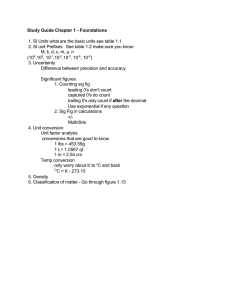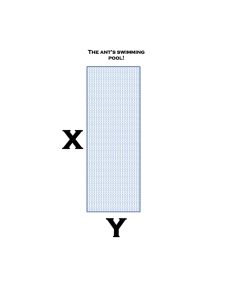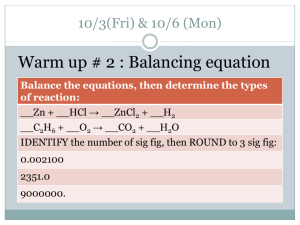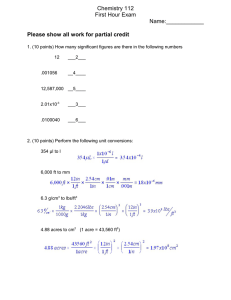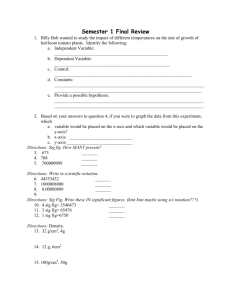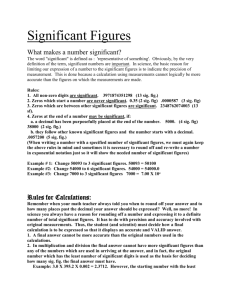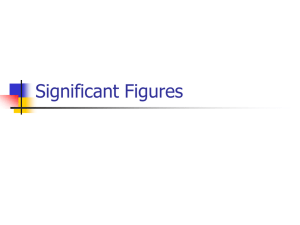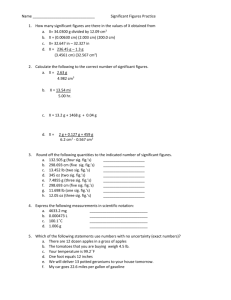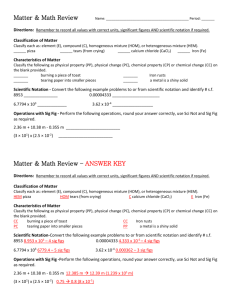Significant Figures – Rounding Off – SI Units
advertisement
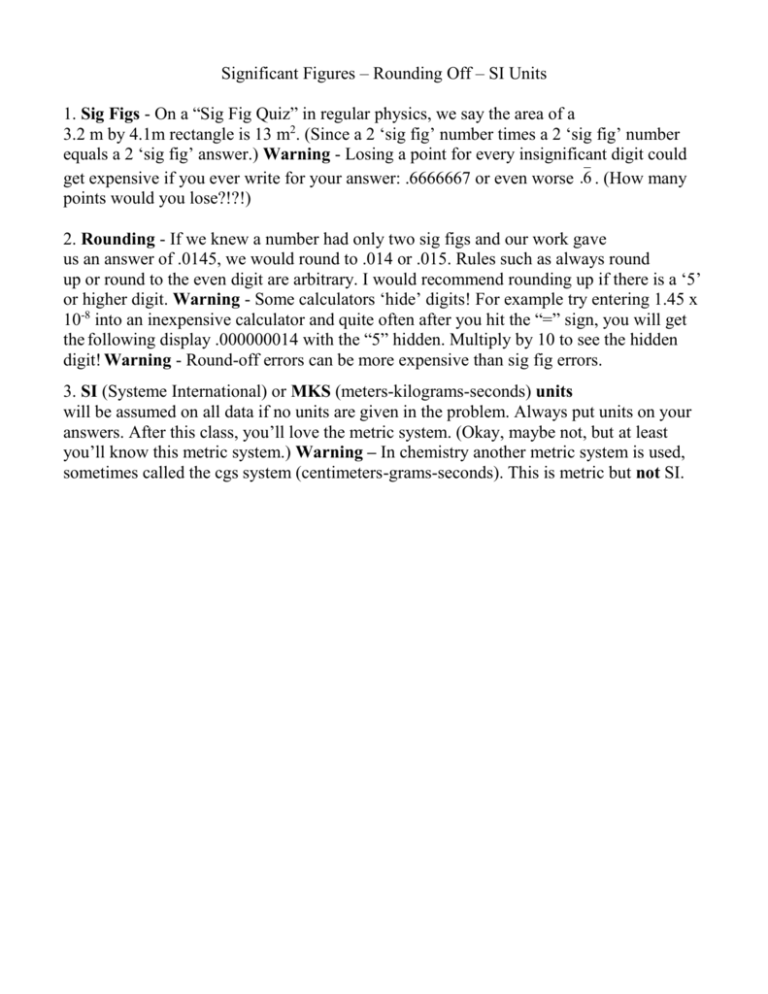
Significant Figures – Rounding Off – SI Units 1. Sig Figs - On a “Sig Fig Quiz” in regular physics, we say the area of a 3.2 m by 4.1m rectangle is 13 m2. (Since a 2 ‘sig fig’ number times a 2 ‘sig fig’ number equals a 2 ‘sig fig’ answer.) Warning - Losing a point for every insignificant digit could get expensive if you ever write for your answer: .6666667 or even worse .6 . (How many points would you lose?!?!) 2. Rounding - If we knew a number had only two sig figs and our work gave us an answer of .0145, we would round to .014 or .015. Rules such as always round up or round to the even digit are arbitrary. I would recommend rounding up if there is a ‘5’ or higher digit. Warning - Some calculators ‘hide’ digits! For example try entering 1.45 x 10-8 into an inexpensive calculator and quite often after you hit the “=” sign, you will get the following display .000000014 with the “5” hidden. Multiply by 10 to see the hidden digit! Warning - Round-off errors can be more expensive than sig fig errors. 3. SI (Systeme International) or MKS (meters-kilograms-seconds) units will be assumed on all data if no units are given in the problem. Always put units on your answers. After this class, you’ll love the metric system. (Okay, maybe not, but at least you’ll know this metric system.) Warning – In chemistry another metric system is used, sometimes called the cgs system (centimeters-grams-seconds). This is metric but not SI.
